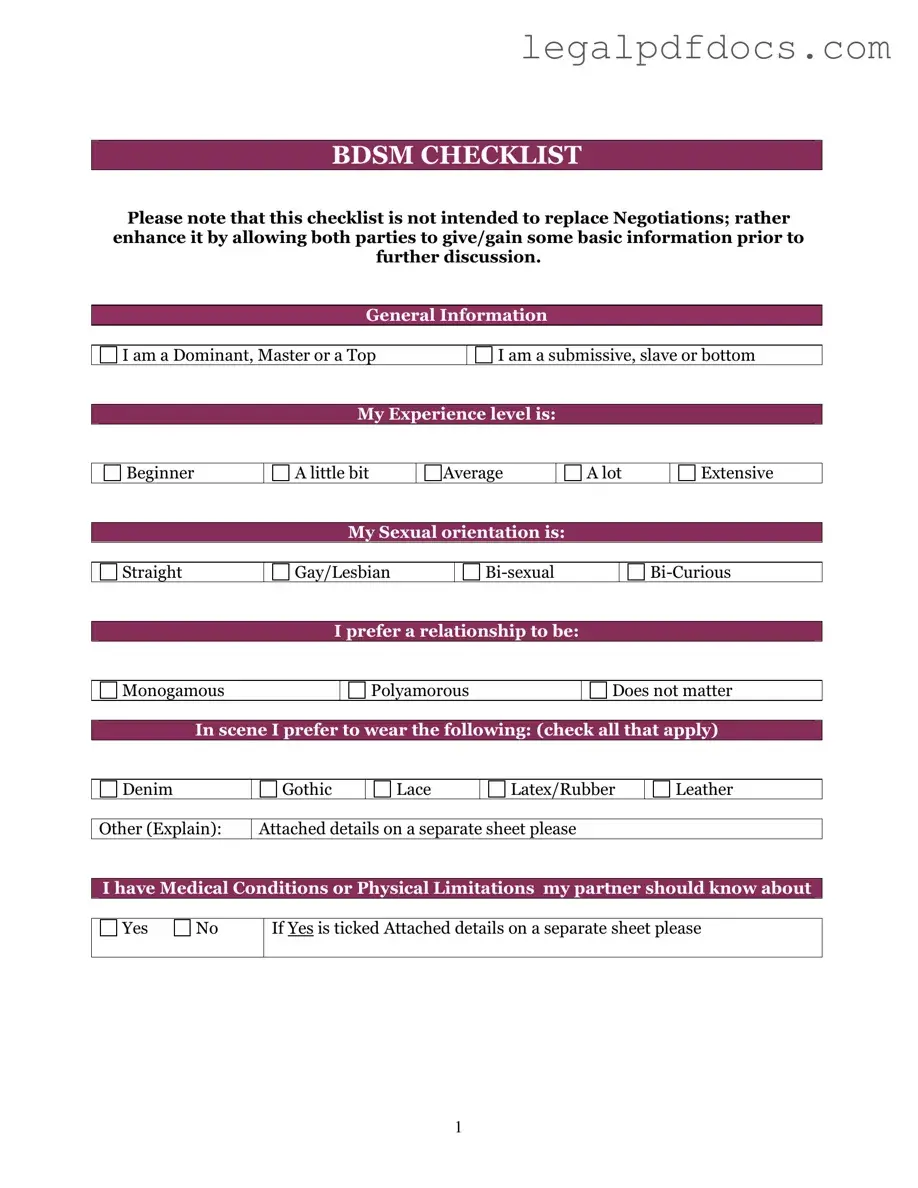Fill Out a Valid Bdsm Checklist Template
The BDSM Checklist form is a valuable tool designed to help individuals communicate their preferences, boundaries, and interests within BDSM practices. It encourages open dialogue between partners, fostering a safe and consensual environment. Take the first step towards understanding your desires by filling out the form below.
Open Bdsm Checklist Editor Here
